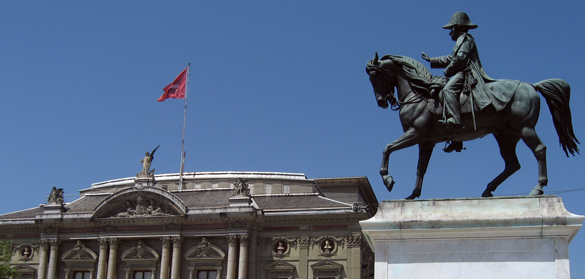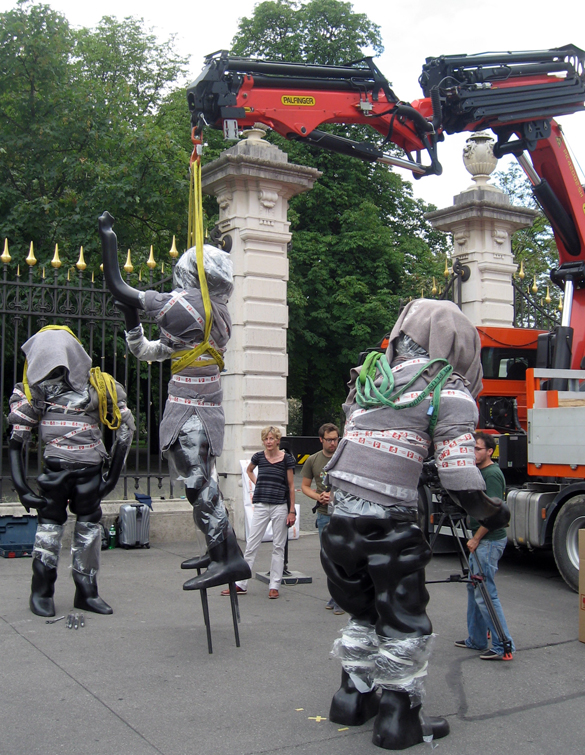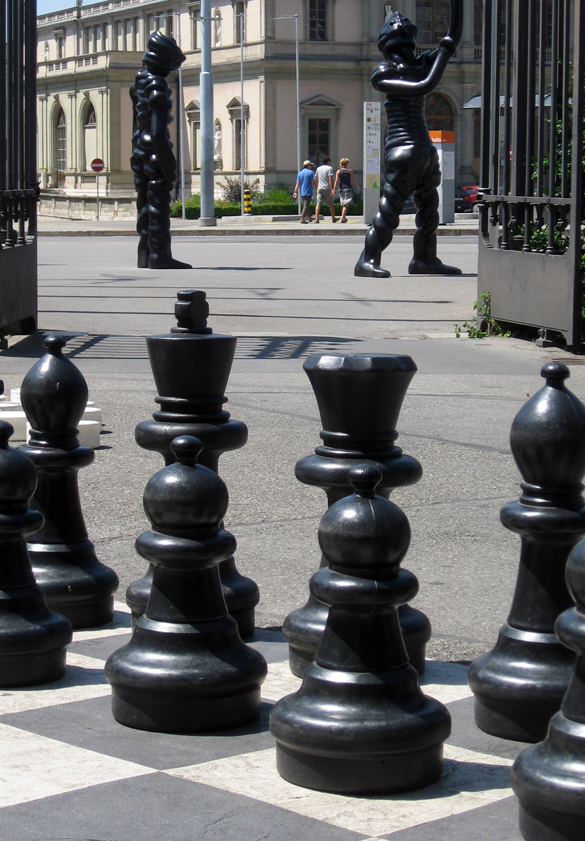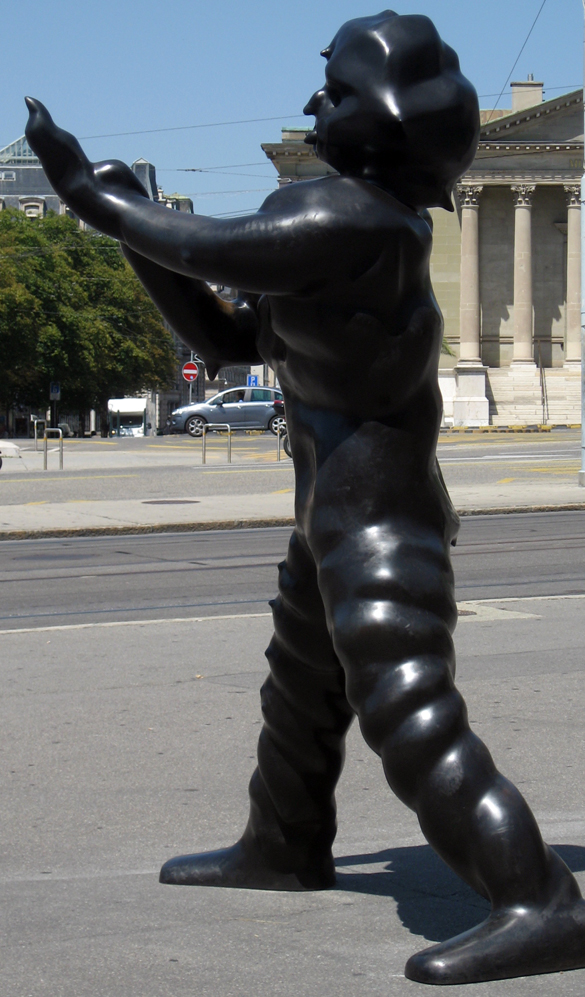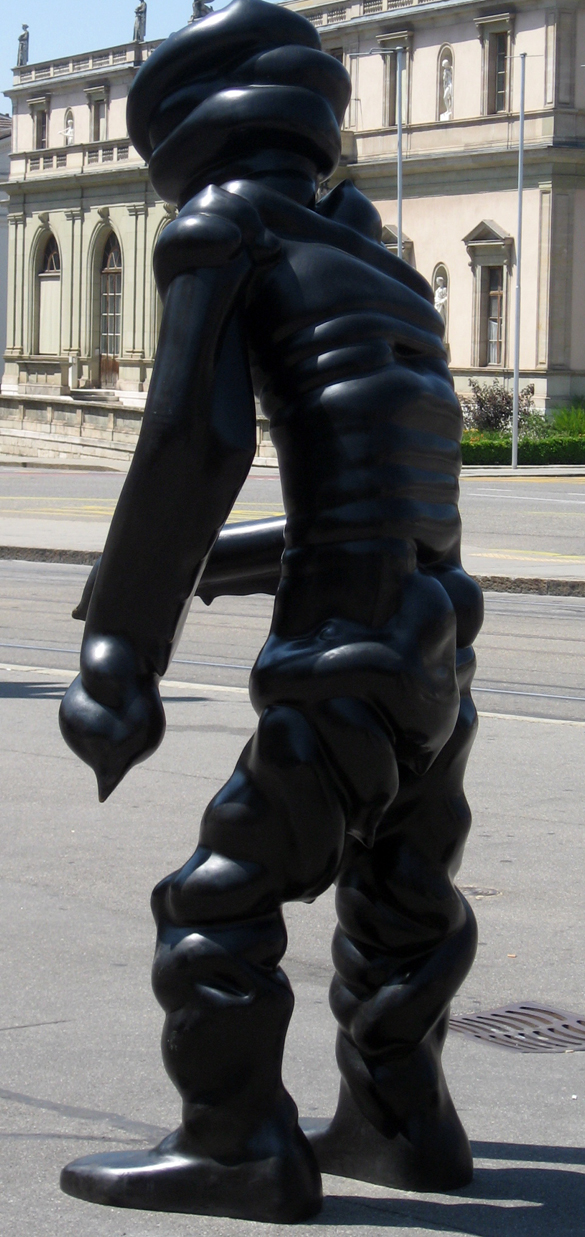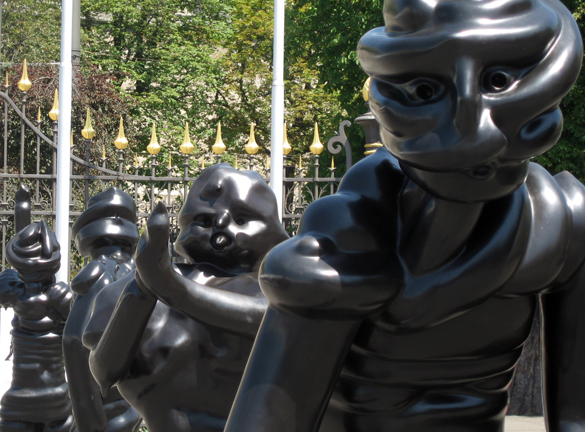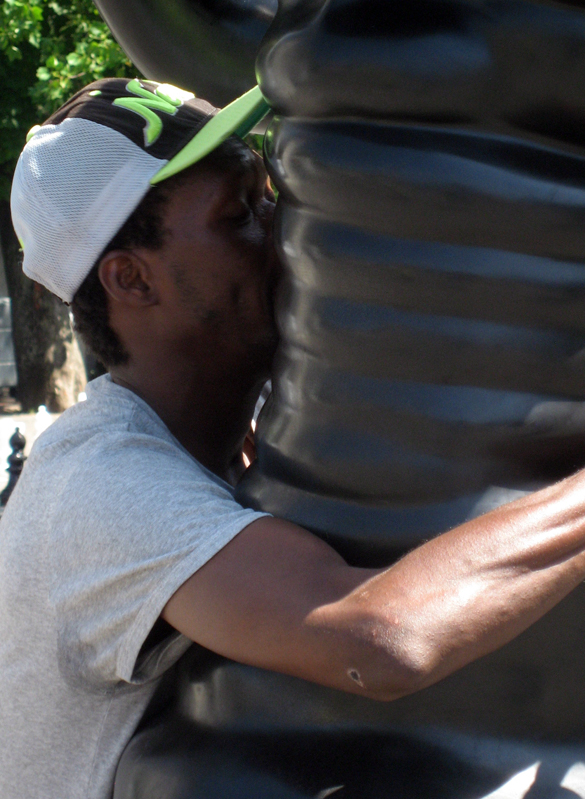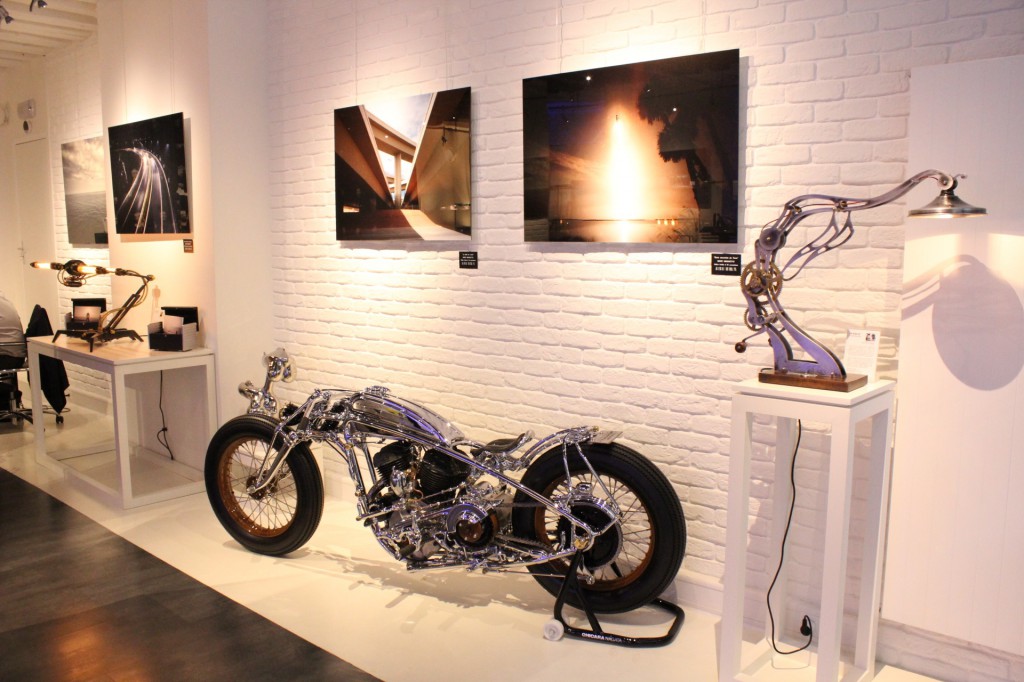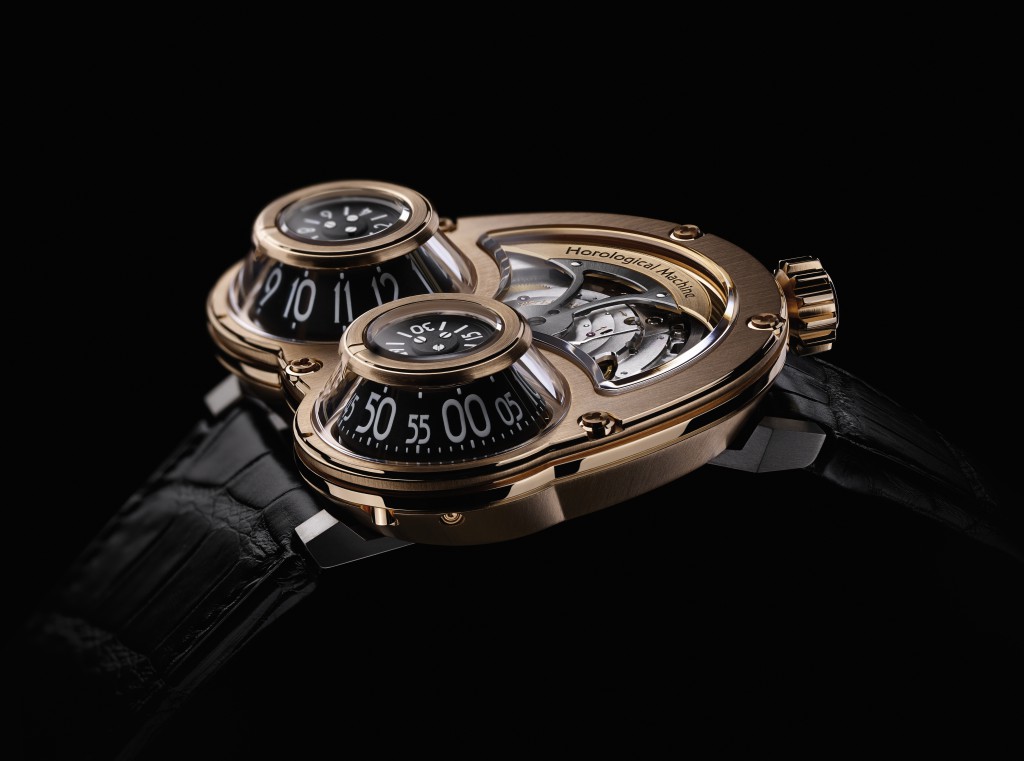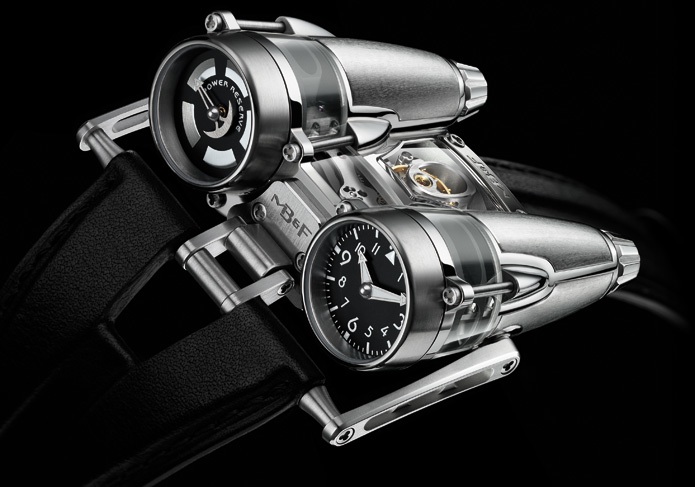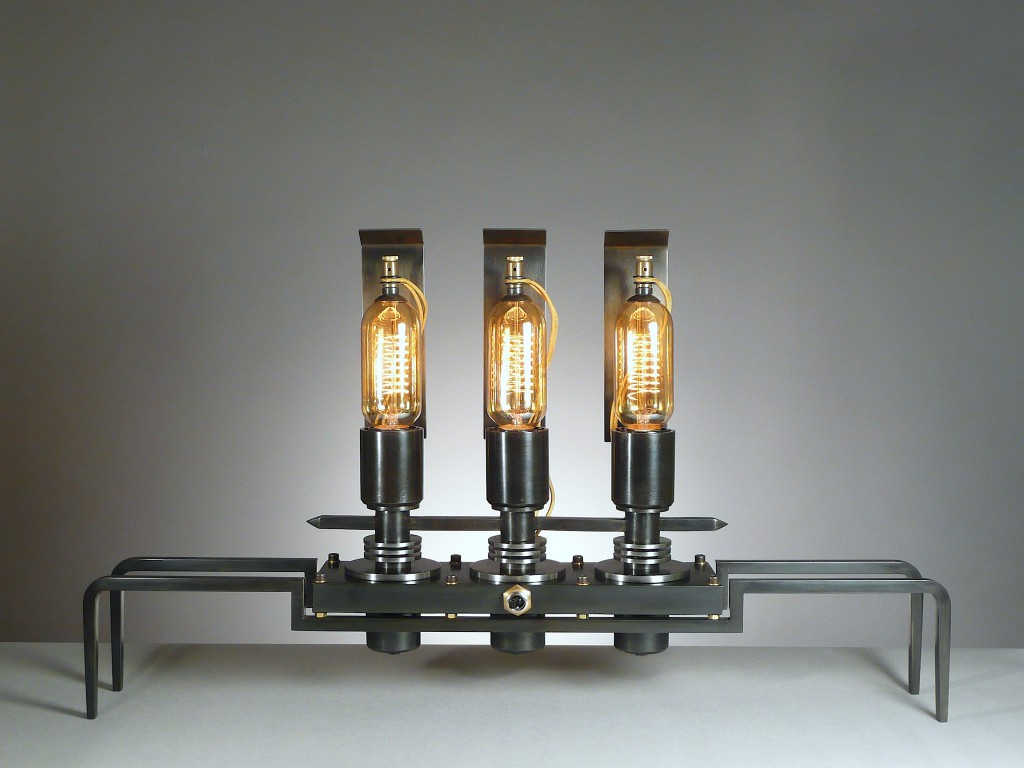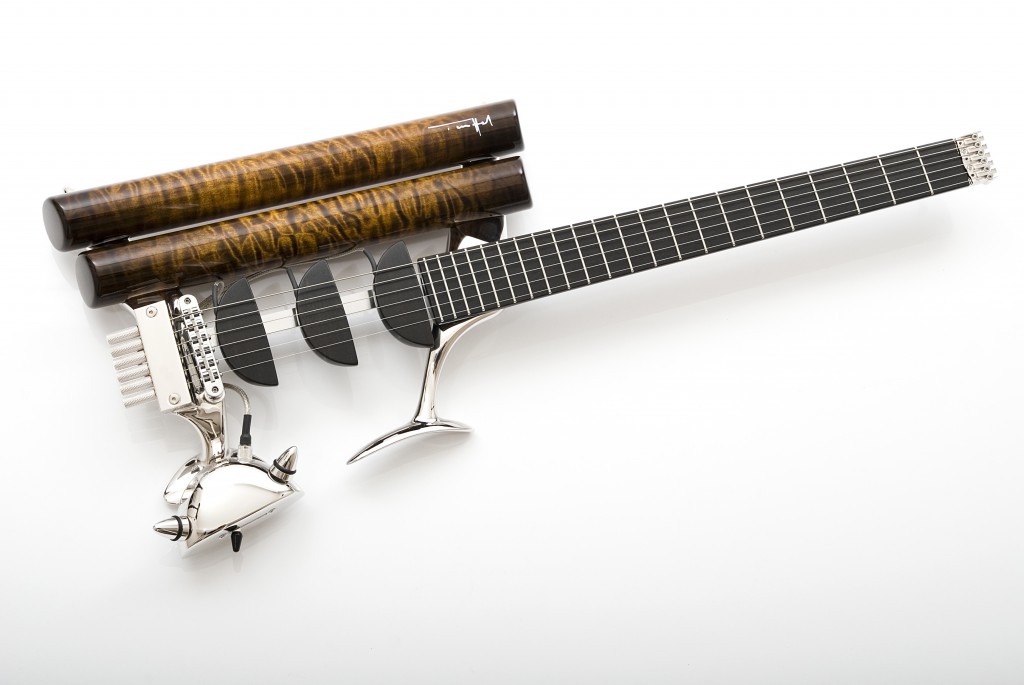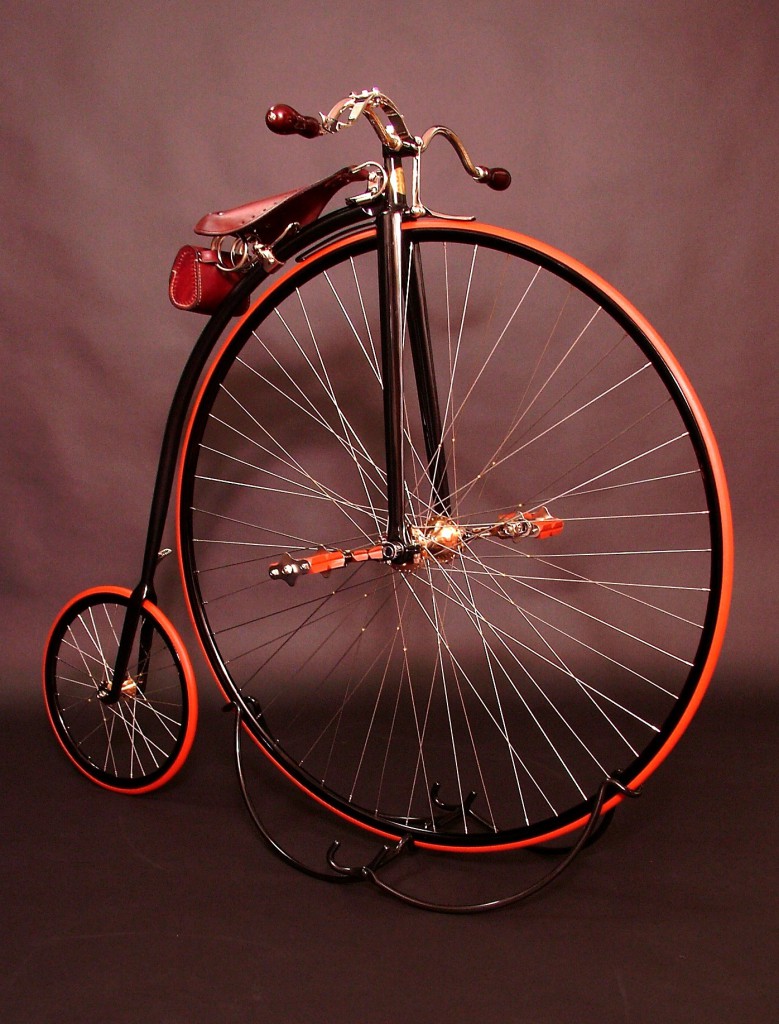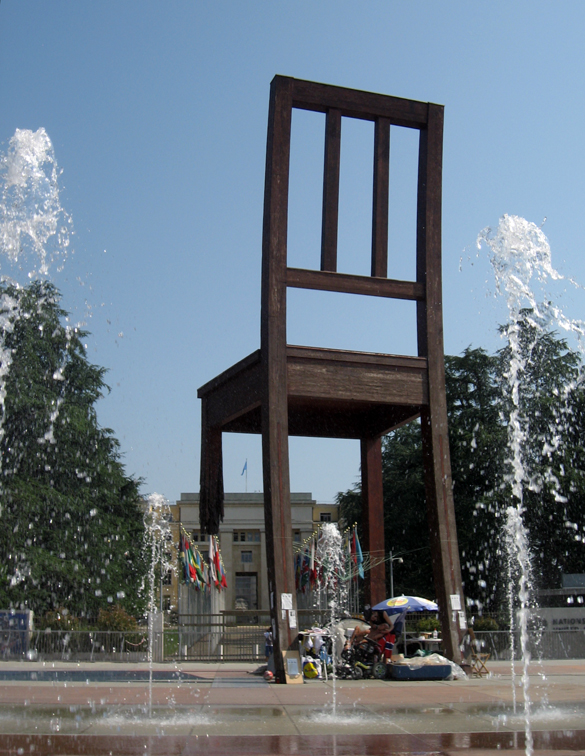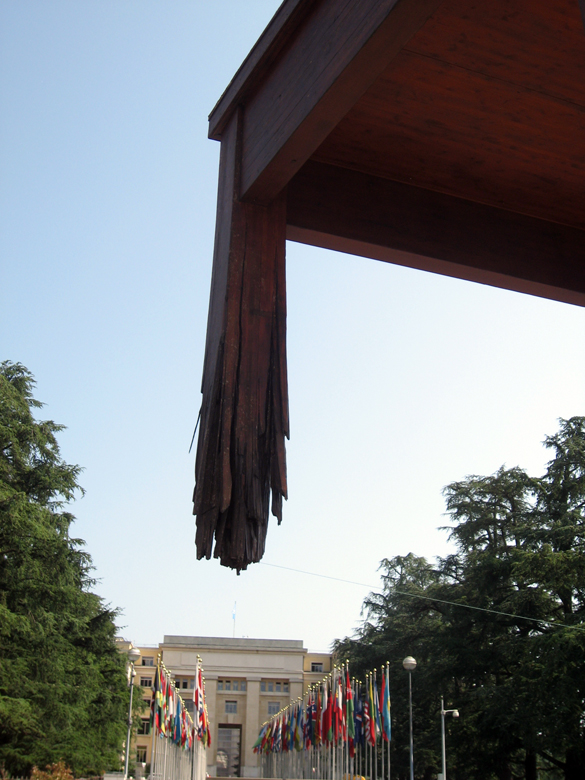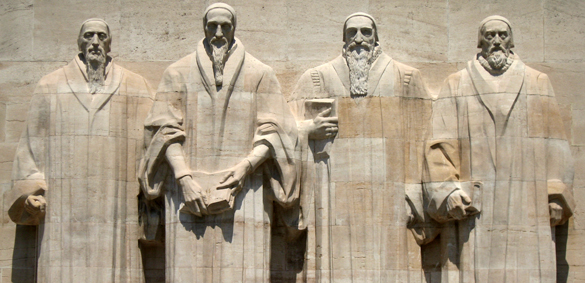Geneva’s Place de Neuve is dominated by a majestic bronze of General Guillaume-Henri Dufour (1787-1875.) He raises a hand seemingly in a salute to the opera house. At the base of the sculpture is “A. Lanz.” Web-research reveals nothing about this master sculptor whose skills were employed by public subscription in 1884. General Dufour was a founding member of the International Committee of the Red Cross and he presided over the First Geneva Convention in 1864. What a guy! And here’s a monument to him in the true spirit of Geneva in the very heart of Geneva!
Fifty meters away are the gates of Parc des Bastions: home to the International Monument to the Reformation. A crane-lorry is unloading four large bronze figures. I am intrigued. I have an impression of extra-terrestrials coming to Earth with a little help from humanity. Are these other-worlders going to usurp Calvin, Knox, Beza and Farel? I give the lady in charge of the installation my Talking Beautiful Stuff card asking if a blog-post might be in order when her task is complete. She never calls. She never writes. After some days, I return to Place de Neuve. I decide to write the post anyway. But I need help here. Is this beautiful stuff?
People play big-public-chess at the entry to the park. My first impression of the four figures now installed there is resonance with the oversized, black chess pieces. My second impression is of liquorice humanoids!
Thomas Schütte’s 2003 Vier Grosse Geister (Four Big Spirits) is on loan to Geneva from the Bayeler Foundation. I admire Schütte’s imagination and workmanship. These rubber-looking, pointy, disconcerting, biped bronzes are powerful and intriguing. They are weighty. They are pleasant to feel and resonate gratifyingly when I tap them with my knuckles. I can’t help being drawn to them. However, despite their feet being solidly planted, their poses have no obvious meaning. Should they be in a group rather than a diverging line? Finally, they are grotesque. Schütte cannot have intended them otherwise.
I am perplexed. It is surprising to find this work here. It draws instant attention but at the same time generates discomfort and even revulsion. A passing woman sees me taking these photos. She yells “What is this s..t?”
In a cloud of marijuana smoke, a very relaxed man embraces one of the pieces. “I really love this guy!” he says. Well, at least somebody does! I can’t help suspecting that if General Dufour was not set on a four metre high marble plinth, he too would get a hug. And what would the good General – or Mr A. Lanz – have thought of these aliens on their patch? And what do you think?

